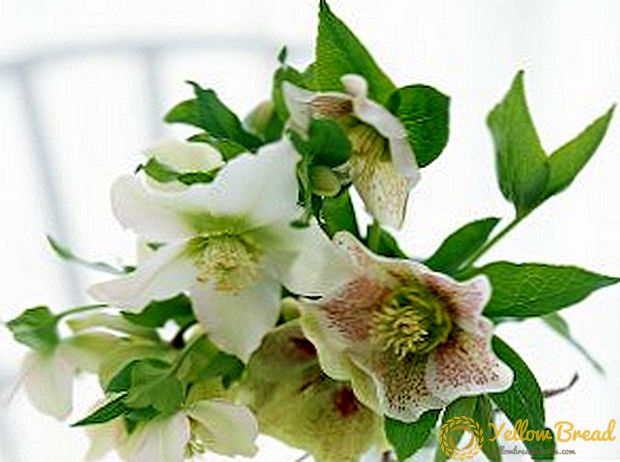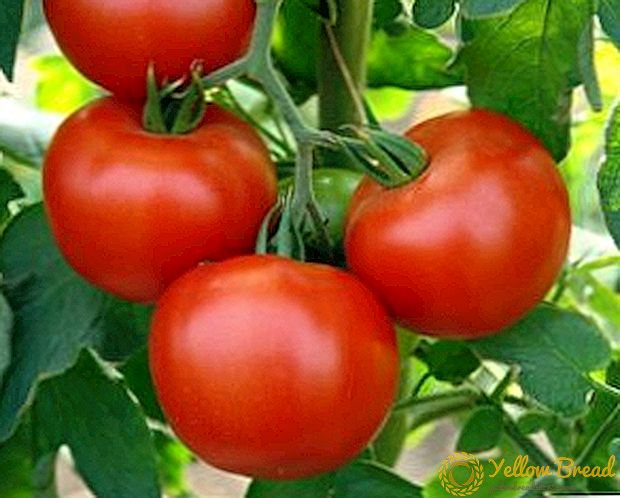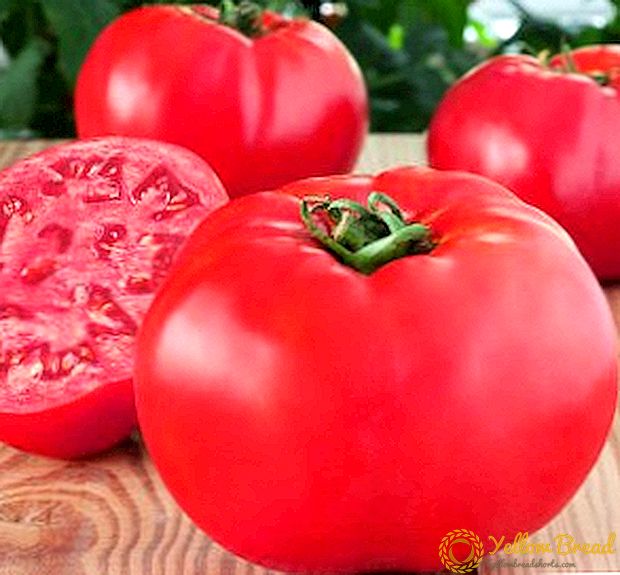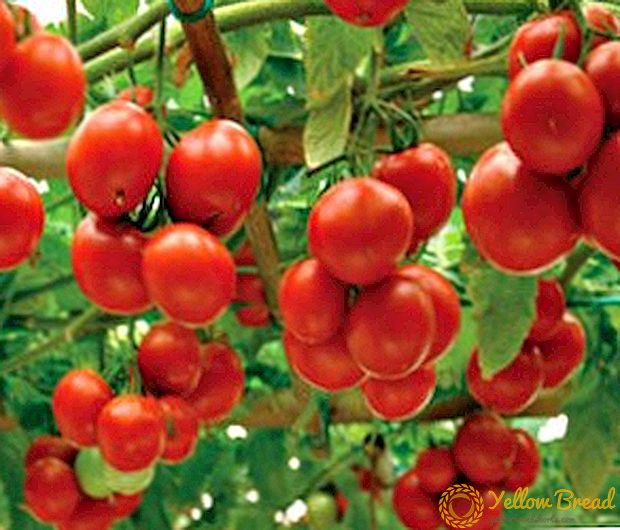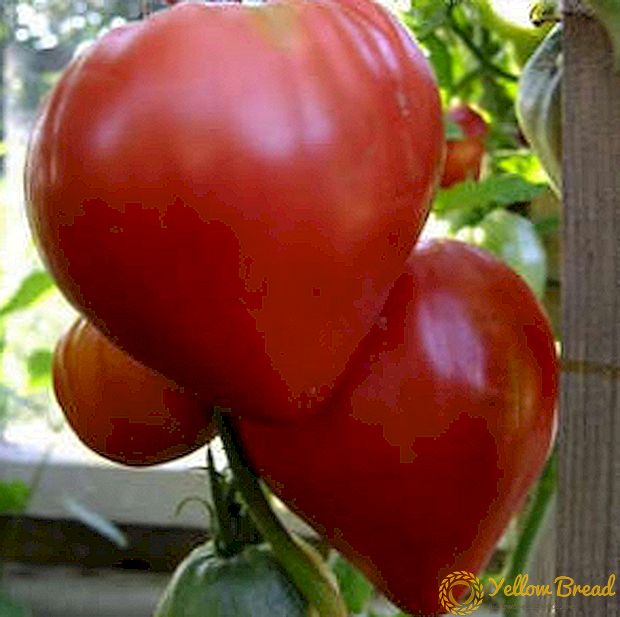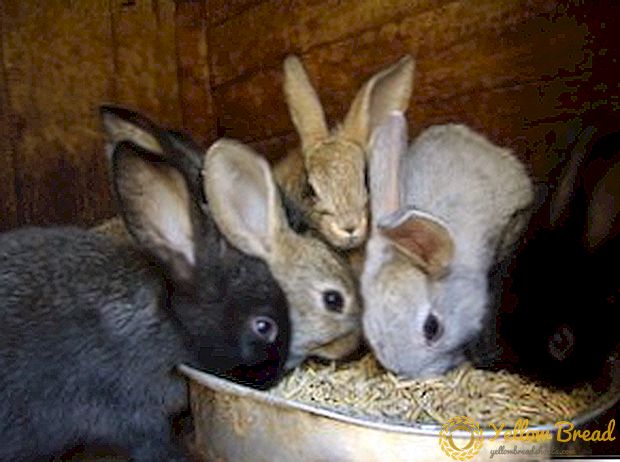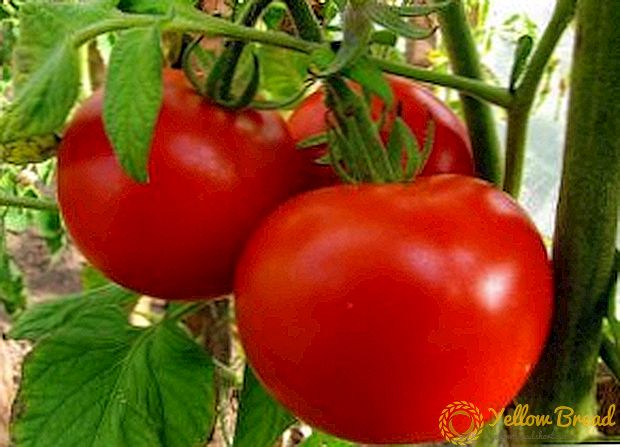 "Volgograd" tomatoes are great for summer residents who are not accustomed to devote a lot of time to their garden. This variety is not picky and does not require careful maintenance. It is characterized by good yield and excellent taste.
"Volgograd" tomatoes are great for summer residents who are not accustomed to devote a lot of time to their garden. This variety is not picky and does not require careful maintenance. It is characterized by good yield and excellent taste.
- Description and variety
- Advantages and disadvantages
- Growing seedlings
- Substrate for planting
- Planting dates
- Seed preparation and planting
- Seedling care
- Planting seedlings in open ground
- Terms and external signs
- rules
- Peculiarities of care
- Watering and feeding
- Masking
- Soil care
- When to harvest
Description and variety
Tomatoes "Volgograd" are divided into the following varieties:
- "Volgograd pink";
- "Volgograd - 323";
- "Volgograd 5/95".

Each of them has its own properties and characteristics that affect the process of care and cultivation of this culture. It is the right choice of varieties that will ensure a good harvest of vegetables.
Particularly noteworthy tomato "Volgograd early 323". Ripening of the fruits is observed already 100 days after their disembarkation. The taste of the tomatoes are very sweet and meaty. Large yield (from 1 square.m to 7 kg) provided this variety is very popular among gardeners.
- well suited for canning;
- suitable for fresh consumption;
- perfectly transports transportation, which makes it possible to grow them in remote places from home and use them for sale.

Due to its unpretentiousness, "Volgograd" tomatoes have gained immense popularity in almost all regions of the country.
Advantages and disadvantages
All varieties of "Volgograd" tomatoes have mostly only positive feedback from consumers and gardeners. In the photo you can see the appearance of the fruit during ripening. They have the following advantages:
- easily tolerate temperature fluctuations and adverse weather conditions;
- when ripe due to the small number of leaves on the plant, the fruits are well accessible for sunlight;
- stable yield;
- neat appearance and excellent taste;
- portability of transportation;
- universality in use.

Growing this variety is equally suitable for open ground and in greenhouse conditions.
Growing seedlings
Before you start growing tomatoes of this variety, need to prepare the beds. For this, in the late autumn, deep digging of the soil with the addition of humus and mineral substances is carried out. After the snow cover disappears, use ammonium nitrate and loosen dry soil.
For the cultivation of this culture most often use the seedling method. The seedling reaches a height of approximately 15-17 cm, after which it is necessary to plant in a well-heated soilafter spring frosts.
Substrate for planting
To create a quality soil using a variety of additives. It is the type and quality of these components that determine the properties of the prepared soil.
For soil mix the following components are used:
- turf ground;
- sawdust;
- sphagnum moss;
- peanut shell, bark of conifers, husks of grains;
- peat;
- sandy soil.
Planting dates
Sowing tomato seedlings for seedlings begins in mid-February. Depending on the planting of plants in the ground, the dates of sowing are determined. In April, you can start sowing tomatoes on unprotected soil, and in late March, plant seedlings for growing under film.
Seed preparation and planting
The most suitable age of the seedling for its subsequent landing in the ground is 60 days. If the climate is warm enough, the finished plants can begin to plant in early May. For planting seedlings under the film, the 20th of April will be favorable if there is warm weather throughout the month.
Due to its characteristics "Volgograd" tomatoes can be grown and seedless way. To do this, wait for a stable warm temperature to form the landing holes. Next, a bed is plentifully watered with warm water and planted seeds (up to 5 pieces in each). With this method, seedlings grow in a fairly short period of time. The only drawback is the delay in fruiting for two weeks.
Seedling care
Absolutely all tomatoes need picking regardless of grade. After the appearance of the first leaves, the saplings dive into a separate container. This is done to strengthen the root system. In early June, seedlings are ready for planting in open ground. This variety does not require abundant watering, so a couple of times a month will be quite enough.
Planting seedlings in open ground
To get a good harvest, you must follow certain deadlines and landing rules.
Terms and external signs
It is best to plant seedlings at the beginning of May and at the end of the month for the central zone. Also, sometimes seedlings are planted in the 20th of April with the use of film in the case of a warm month.
rules
To obtain a rich harvest should follow some rules:
- The first step is to take care of the soil. For tomatoes of this variety, sandy soil is most suitable. No less favorable will be the usual soil due to the high level of fertility.
- To ensure the proper structure of the soil sometimes use the action of the precursors. These include: cabbage, carrots, eggplant, legumes.
- Fertilizers, in particular, humus have a positive effect. After making it, the soil should definitely be dug up. In the spring, ammonium nitrate is used as a fertilizer.
- After 60 days, seedlings are planted in open ground. By this time, leaves are already forming on the bushes.

Peculiarities of care
Like any vegetables, "Volgograd" tomatoes require a certain care. For novice gardeners, the Volgograd Early 323 tomato is well suited. Due to its characteristics and description, this variety does not require careful maintenance.
Watering and feeding
Tomatoes do not like abundant watering with water. If normal weather conditions persist, it is enough to water once every two weeks. If there is a drought, then the number of waterings should be increased. In order not to exceed the permissible moisture level, it can be easily controlled. When the soil at a depth of 10 cm remains wet, it means that watering is not required.
Masking
One of the main advantages of "Volgograd" tomatoes is that they don't need pasynkovanie. These varieties of tomatoes can perfectly develop independently without any intervention. Due to the average foliage of bushes, the sun's rays evenly fall on all parts of the plant and the fruit itself.
But this does not mean at all that for this sort pasynkovanie is not used at all. Some gardeners sometimes use this solution. Passing bushes is used in case of need to reduce the volume of the crop (along the entire height of the bush) or to increase the mass of the fruit (the action is carried out before the first hand).
Also stepchildren can be used as fertilizer. After breaking, they must be placed in a bowl and filled with water. Leave for a few weeks to start wandering. After that, the mixture should be strain and dilute according to the ratio of 1 to 10. The resulting dressing is used for watering the bushes at the base of the root.

Soil care
"Volgograd" tomato distinguished by good resistance to various diseases, however, this variety also needs proper care.
In order to protect your crop from damage, it is necessary to observe crop rotation, as the mushrooms have properties to remain in the soil. Therefore, it is not recommended to grow tomatoes for several years in the same place. You can also disinfect the soil with boiling water.
When to harvest
Harvest when the tomatoes acquired a characteristic red color and ripened.This may take several days. as the fruit ripens. After picking a tomato from a bush, a stalk may remain on it, which will allow the tomato to increase its shelf life. It must be removed before canning or eating. It is important to have time to remove the vegetables before the night temperature drops.

Gardeners often harvest immature vegetables to be used for home-grown products. During the period of drought and intense heat, "Volgograd" tomatoes poorly emit red pigment, which provides a rich color. This is due to high temperature exposure. But you should not get too carried away with the collection of immature vegetables, since the content of vitamins in them is much less compared to ripe tomatoes.
"Volgograd" tomatoes are in many ways superior to most imported varieties due to their exceptional characteristics and taste. Despite the fact that this variety is not picky in the process of growing, it requires some care and compliance with some rules. As a result, you get a rich harvest of tasty and healthy tomatoes.

